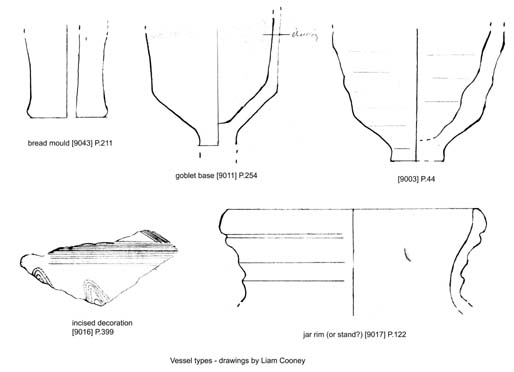Saïs Report, 2007
Season Reports
Saïs Report, 2007
Saite Pottery: Reconstruction, study and recording
Amphorae
All of the pottery excavated in 2003 in Excavation 4 on the western side of the ‘Great Pit’ was drawn by the illustration team. In addition, a number of amphorae from the excavations were reassembled and reconstructed by the skilled workmen from Qift in the south of Egypt. Qifti workers were originally trained by Petrie and have retained a strong tradition of expertise in excavation and post-excavation work. Reis Ali, his son Alaa and son-in-law Abdel Gabar did an amazing job in bringing our vessels back to life.
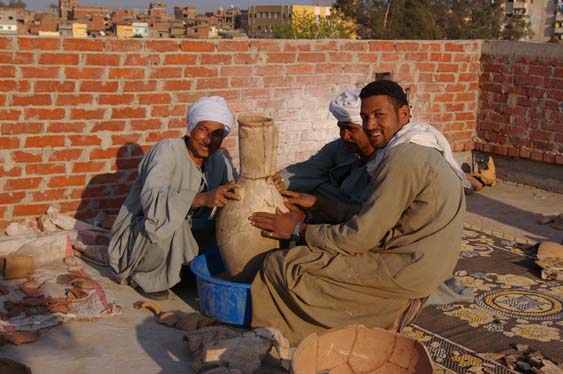
Clazomenian amphorae: they are characterised by red stripes around the rim, shoulder and body, as well as running down the handles. They have pleasing shapes with narrow bases, wide bodies and medium-wide necks. The feet have a depression in the centre of the base. The typology of vessels is well defined, enabling the vessels from Sais to be dated from 600 to 525 BCE. (For comparative vessels, see R.M. Cook and P. Dupont, East Greek Pottery, Routledge: London and New York, 1998.) They would have held wine originally, from the coast of eastern Turkey where the Greek colony of Clazomenia was an important trading outpost. The most famous Clazomenian wine was seasoned with sea water. Three, almost complete, amphorae were reconstructed and recorded alongside numerous fragments of necks, bases and body sherds.
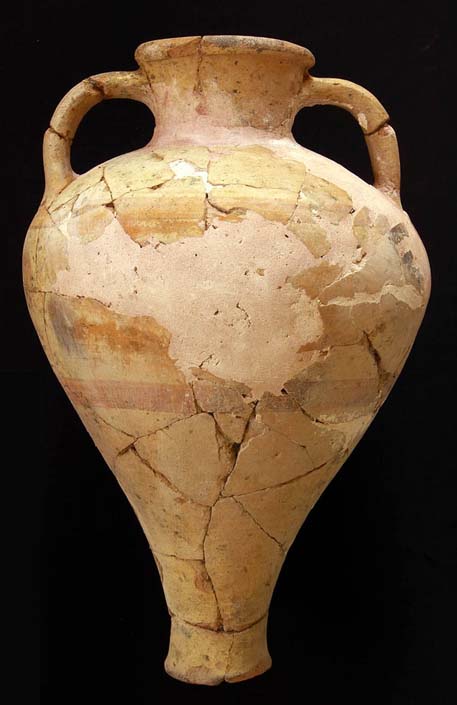
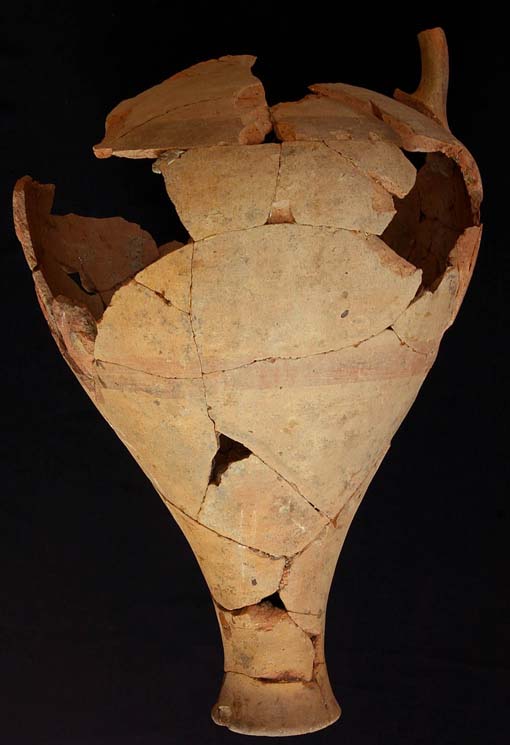
Chiote amphorae: one almost complete amphora was recovered from the excavation, lying next to the well. It lacks a handle. The neck and upper body of another amphora was reconstructed. They are characterised by having long necks, narrow bodies and long bases, with a depression in the base of the foot. They are white painted with spirals on the body and lines around the rims, shoulder and down the handles in a dark paint, ranging from red to almost black in colour. The vessels at Sais date from 550 to 525 BCE and are identical to the famous amphora with a mud seal dating to King Amasis found by Petrie at Tell el Defenneh. They would have held olive oil or wine with a capacity up to 30 litres.
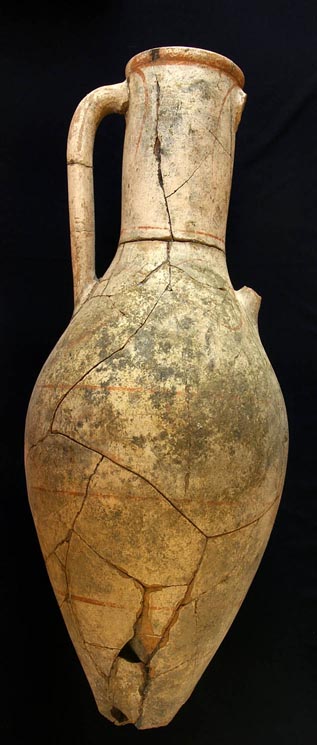 | Left : Chiote amphora. Height : 80 cm. |
Amphora from Lesbos : a part of one of these distinctive amphora as well as fragments were recovered. The amphora have a shape in the form of the Greek letter ‘phi’, that is a long neck and base with a roughly spherical body. They are made from a distinctive black to grey, micaeous (that is, sparkly) fabric. The handles sometimes have trails of clay along them known as ‘rat tails’. They were used as containers of olive oil and wine. The form of the Saite examples dates them to around 550 to 500 BCE.
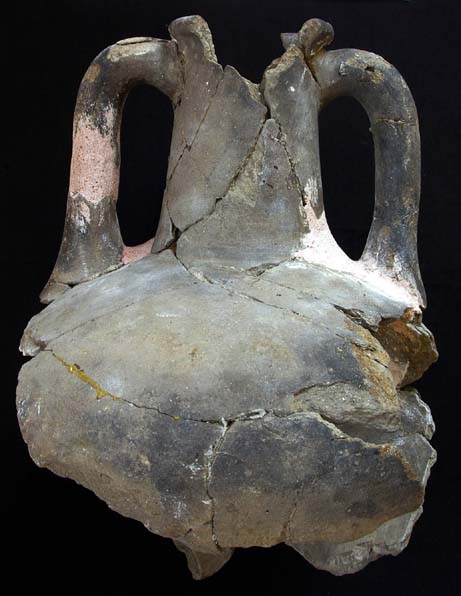
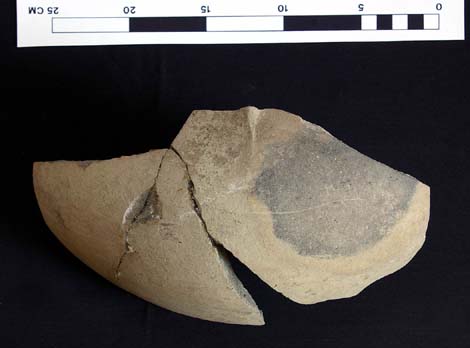
Samian and Milesian amphorae: There are two types of similarly shaped amphorae, but the ware of each type is slightly different. The amphora shape is a short neck, conical body and small button feet. The ware types are a fine, orange coloured fabric and a grey, micaceous fabric respectively. They have no painted decoration, although may show pot marks. The Samian types from Sais date to the sixth century BCE (600-500) and in the case of the Milesian amphorae from 550 to 500.
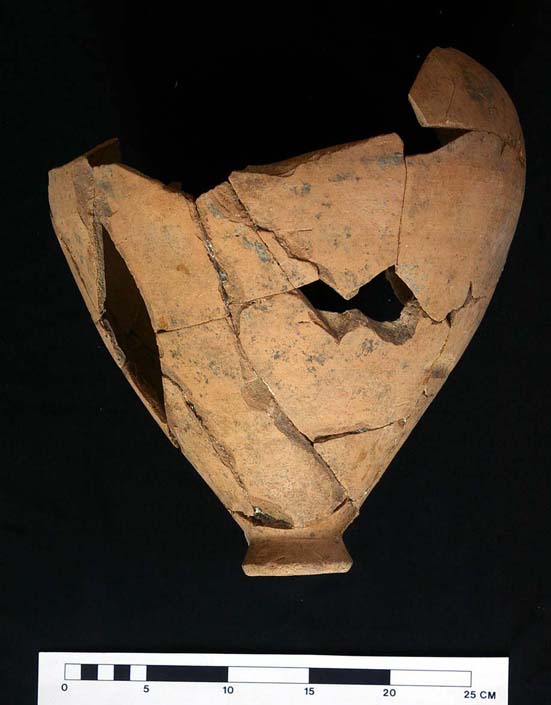
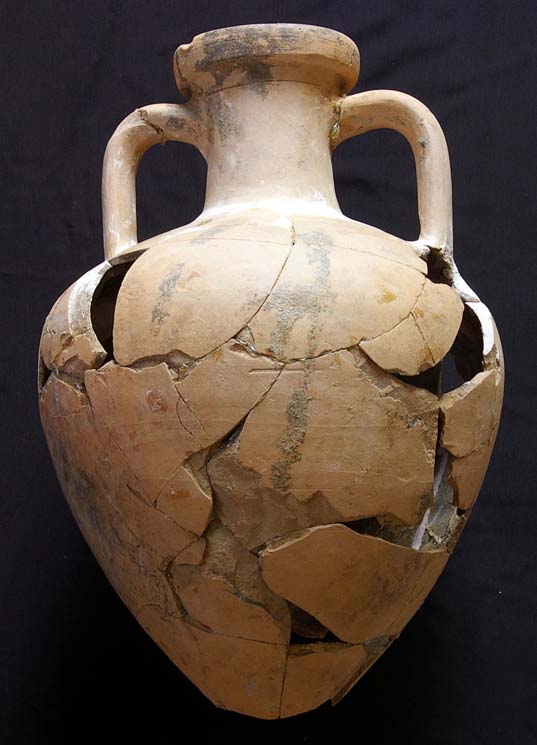
Phoenician amphorae: a group of ‘torpedo amphorae’ were reconstructed. They all had slightly different shapes, ranging from short, wide bodies, to longer, thinner bodies. They have horizontal shoulders with no neck. The fabric of the vessels is a brittle, white to cream coloured ware, with small coloured inclusions. The outside has a white or cream slip wiped over it. They may have been used for the transport of resin and come from the Syrian coastal areas controlled by the Phoenicians. The Saite examples date to around 525 BCE.
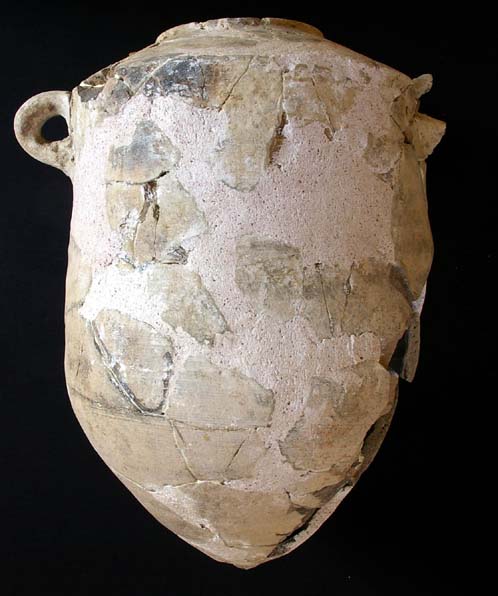
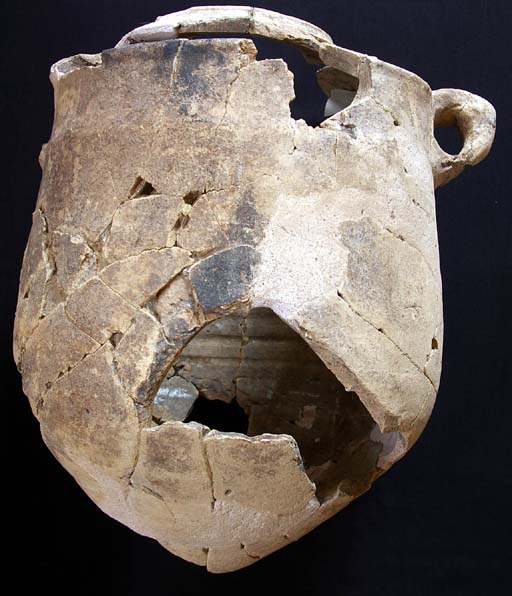
Greek Fine wares (All photographs by Sabine Weber.)
The Greek fine wares, by contrast, all consist of small fragments of pottery which were found in the Saite rubbish dump and the well. Sabine Weber is an expert on these fine wares and was able to identify examples from a range of original sources, as well as suggest the types of vessel from which they may have come. Altogether she studied 70 fragments. The best fragment comes from a Fikellura amphora neck, from Miletos dating to around 560 BCE. It is decorated with twisted cable and stylised lotus flowers.
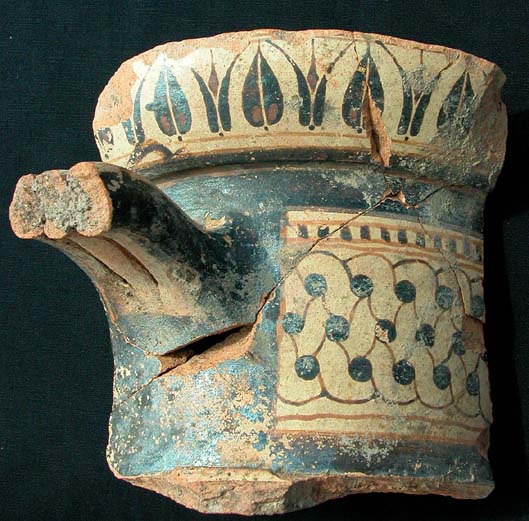
There was also a piece of a Corinthian aryballos for perfume [4001]P.7 625-575 BCE, a Corinthian oinochoe or closed alabastron (jug), with incised and painted rosette decoration [4005] 4.035 dating to 620-600 BCE, a neck fragment from a Corinthian aryballos 8.71, dating to the same period.
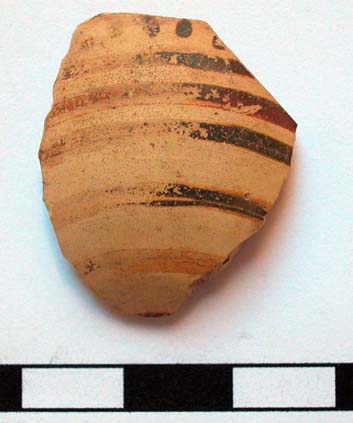 | Left : Corinthian aryballos for perfume [4001] P.7, 625-575 BCE . |
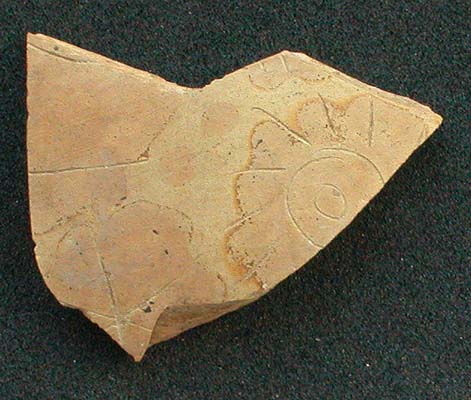
The oldest fragment was from a meander dish, with a suspension hole pierced through it 8.075. This comes perhaps from North Ionia and also dates to around 625-580 BCE. There was also a tiny fragment from a Chian chalice from Chios [4001] P.3, approximately 2cm by 2 cm in size. The outside is painted with a creamy slip, on the inside the black glaze has a floral pattern painted upon it. It can be dated from 570 to 530 BCE.
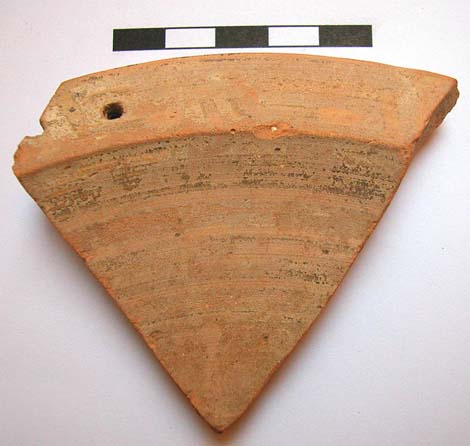
Finally, there was a rim fragment of a South Ionian cup [4021] P.15, perhaps from Miletos and dating to sometime after 600 BCE.
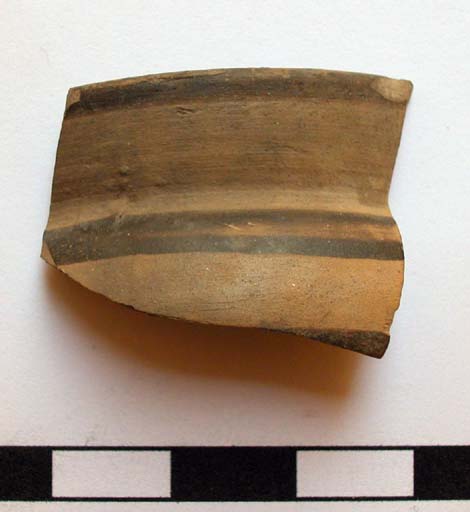
The dates of these tiny fragments suggest that the fine ware material is a little older than the amphorae fragments and also that many of the types of vessel may have been used in cultic contexts. They could have been dedicated in a temple — but whether this was an Egyptian or Greek temple is not clear. It is possible that Greek mercenaries and traders living at Sais dedicated vessels in the temple of Neith, but they could equally have dedicated them to her in her form of Athene, perhaps in a Greek style temple. Unfortunately, no real evidence of either temple survives at the site, with most of the Dynasty 26 buildings having been removed a long time ago.
Egyptian material
Numerous Egyptian vessels were found in the Saite rubbish tips of Excavations 4 & 8. We were able to reconstruct beer jars as well as examples of the Saite red polished ware. A large situla vessel with a ribbed neck was very fragile as were a small bowl and globular or spherical vessel. They are made from Nile silt mixed with a small amount of fine chaff and limestone. The outside surfaces are painted with a vivid red paint, which is then polished in horizontal stripes, not always evenly. The vessel therefore has a striped effect. It may be that the technique was in imitation of earlier red polished vessels such as the Medum wares of the Old Kingdom.
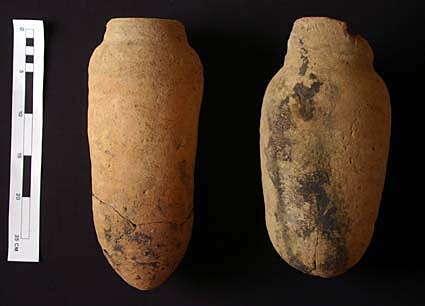
Above : Beer jars. Maximum height : 30 cm. Right : Globular, red-striped jar. Height : 18.5 cm | 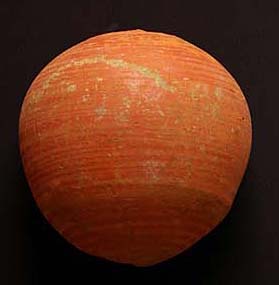 |
In addition, there was a larger globular vessel, perhaps a cooking pot or one whose red paint and polish had been lost.There was also a good selection of small votive vessels dating to the Saite period. They had an interesting set of different forms including : ridged, carinated bowls like those from New Kingdom; bowls with inverted rims, and nipped off bases; cups with straight sides and nipped off bases; and plain plates.
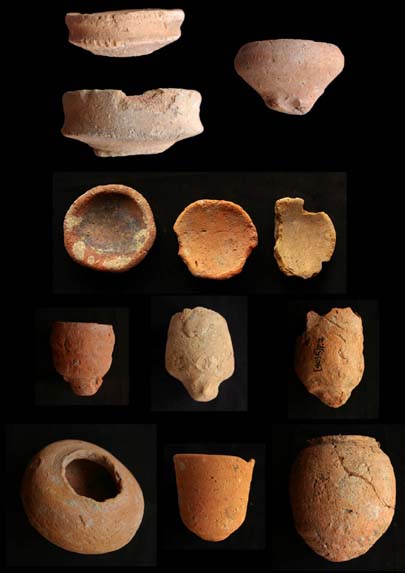 | Left : Small votive vessels. Maximum height : 10 cm |
Most of the vessels could have been made very quickly by hand, but the variety of shapes is interesting, perhaps suggesting that people could make an offering of different types of commodity and there was a particular type of vessel for whatever was offered: dishes for liquids, tall sided vessel for wine or beer; plates for bread or dry commodities, small necked vessels for oil; lamps and so on.
Amongst other cultic-type vessels were examples of three Bes-vessels. They are small pots with incised details of the face of the god Bes on one side. The best example is only 8 cm high, but Bes’ feathered headdress is shown by pricked-out dots and his eyes are small applied circles of clay.
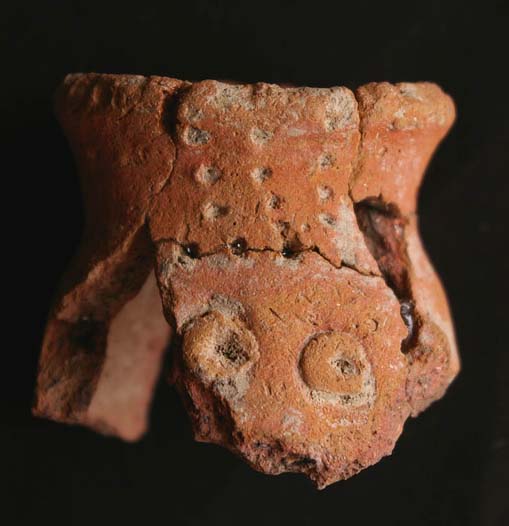
In addition, there was a quantity of more domestic type vessels including cooking vessels, bowls and lamp dishes. It is likely that most of the vessels also related to the cultic nature of the place where they were found.
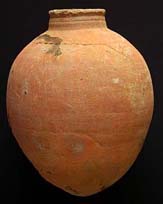 | Left : Globular cooking vessel. Height : 38 cm. |
Third Intermediate Period Pottery: recording
Liam Cooney has spent the last three seasons valiantly recording all of our Third Intermediate pottery from the Excavations he carried out in Kom Rebwa East. He himself supervised work in Excavation 9 in 2006, but has now also recorded pottery from Excavation 5 and 6. In all, he has drawn around 950 sherds and other illustrators have contributed to Excavations 5 and 6 with 600 drawings. This corpus of 1550 drawings is an interesting set of domestic pottery from the Third Intermediate Period town at Sais which preceded the great expansion of the site in Dynasty 26. It may even have come from the area of the site which had the palace of the resistance fighter Tefnakhte! It is likely that in Dynasty 26 the Royal Place was built in the area on top of the earlier town site but it has long since vanished, revealing the earlier layers.
One of the defining types of pottery object from these excavations are the goblets in Nile silt. They can be made from extremely fine ware, up to 2-3 millimetres thick. Needless to say, there are no full versions of these goblets but we can reconstruct the form from the pieces that have been found. The number of these goblets and their quality, suggest that in the Third in Intermediate Period, there may have been a drinking or feasting culture amongst the Delta elite. At feasts the local elders may have gathered to reaffirm their allegiances and obligations. Within the society as a whole this kind of feasting may have become more important. We know of stemmed bowls from the New Kingdom at Sais and goblets from the later New Kingdom in fine materials from other sites, but the Nile silt goblets are most common in our Third Intermediate Period layers and distinguish the two time periods.
